I agree Our site saves small pieces of text information (cookies) on your device in order to deliver better content and for statistical purposes. You can disable the usage of cookies by changing the settings of your browser. By browsing our website without changing the browser settings you grant us permission to store that information on your device.
Last updated on 21 March 2024
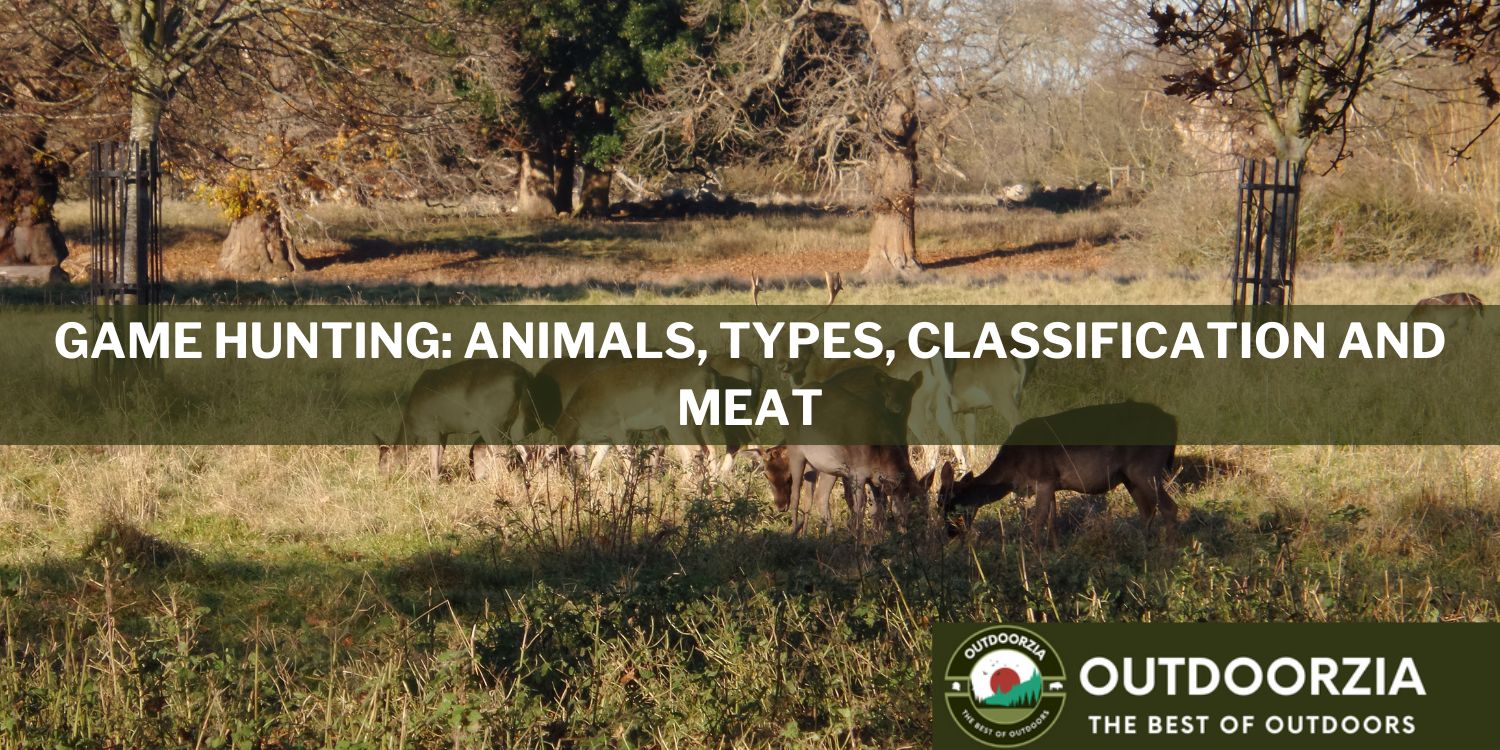
Game animals are wild animals hunted for sport or food. Game hunting has long been intertwined with human civilization, representing a primal connection to nature and the pursuit of sustenance. From ancient times to the present day, hunters have engaged in the pursuit of various animals, each with their own unique characteristics and classifications. Alongside the thrill of the chase, game hunting also offers the reward of acquiring high-quality meat which holds cultural and culinary significance.
Any wild animal species which is hunted for food or sport is considered to be a game animal. For an animal to be classified as legal game, it must fall under the regulatory guidelines established by local or national wildlife management authorities. These guidelines often include specific hunting seasons, licensing requirements, and restrictions on the methods of take. The purpose of these guidelines is to ensure sustainable populations and ethical hunting practices. Animals not classified as legal game typically include endangered or protected species, pets, and certain non-native species which are prohibited from hunting due to ecological concerns.
Game species are generally divided into several categories based on their habitat and size. These categories include big game (such as deer, elk, and bear), small game (rabbits and squirrels), upland game birds (pheasants, quail and grouse), waterfowl (ducks and geese), and varmints or predators (coyotes and foxes). The most popular game meat varies regionally but often includes deer (venison), which is prized for its lean, flavorful meat.
Game meat is generally considered safe to eat when properly handled, processed, and cooked. However, it's important to be aware of potential concerns such as contamination with lead from ammunition, diseases like chronic wasting disease in deer, or parasites. Hunters are encouraged to follow safety guidelines for processing and cooking game meat to reduce any health risks. Eating game meat offers benefits such as a lean source of protein and a connection to natural food sources and conservation efforts.
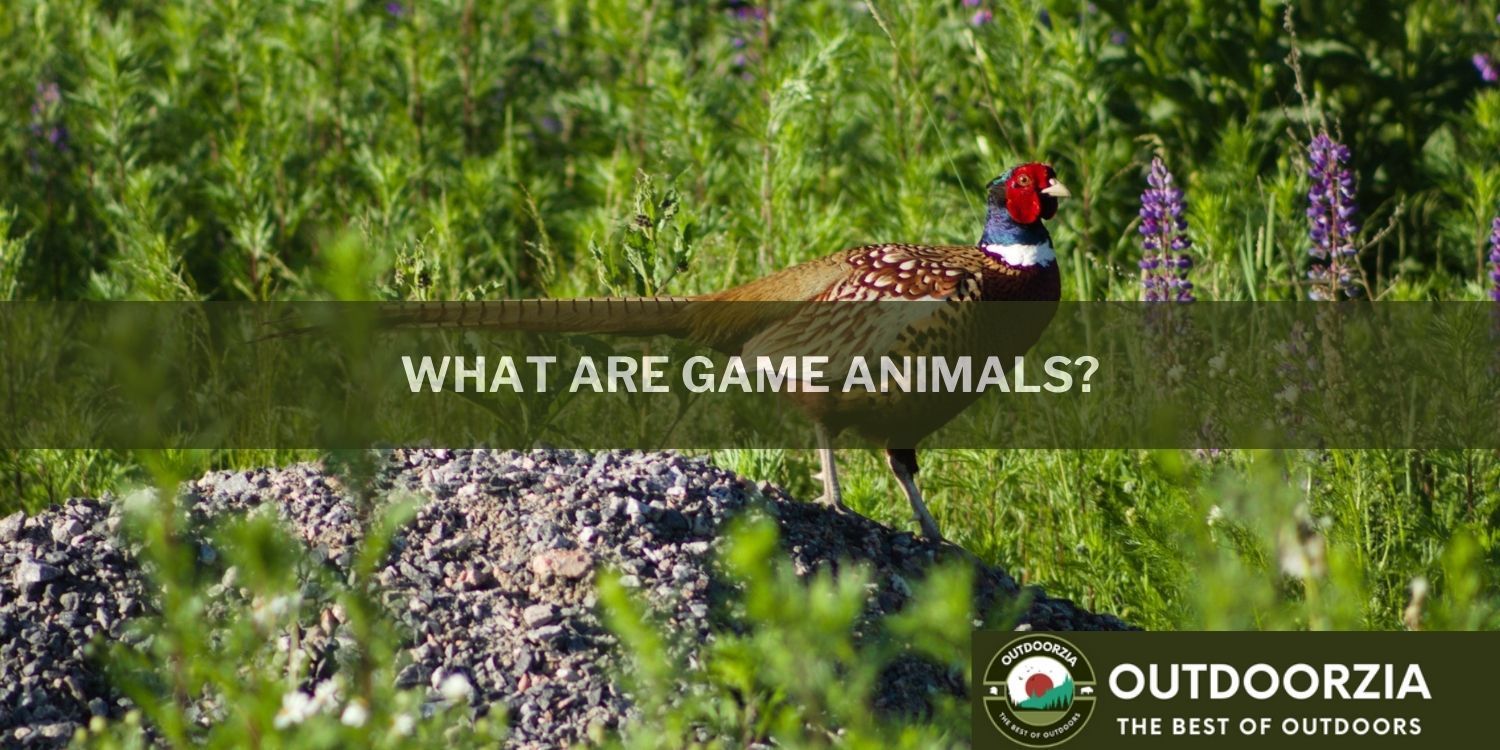
Game animals are designated species legally hunted for sport, food, or both. Game animals are regulated to ensure sustainable and ethical hunting practices. The classification of an animal as legal game is determined by factors such as population health, ecological impact, and potential for sustainable harvest. Legal game normally includes a variety of birds, such as pheasants and ducks, and mammals, like deer and elk. Game species are chosen for their ability to reproduce at a rate which supports regular hunting without endangering the species.
Animals not classified as legal game, including certain endangered species or those with critical ecological roles, are protected to preserve biodiversity and ecosystem health. Regulations governing hunting and game species are established by wildlife management authorities and vary by location. The aim of these regulations is to balance conservation objectives with the cultural and recreational aspects of hunting. These measures ensure hunting contributes positively to wildlife management and conservation efforts, while providing opportunities for outdoor recreation and the sustainable use of natural resources.
For an animal to be classified as legal game, it must meet criteria established by wildlife management authorities which ensures game species population is sustainable and can support regulated hunting. These criteria for an animal to be classified as legal game include; a stable or thriving population size, minimal risk of endangerment from hunting activities, and a significant enough ecological role for hunting not to negatively impact the ecosystem.
Additionally, the species must be able to reproduce at a rate which compensates for both natural mortality and hunting losses. This ensures the game animal's numbers remain healthy and stable. Legal game species are often chosen for their ability to provide recreational opportunities for hunters and, in many cases, their value as a food source. This classification also involves consideration of ethical hunting practices, where the animal can be hunted in a manner which is humane and respects wildlife conservation principles. Ultimately, the classification of a legal game animals aims to balance the cultural and recreational importance of hunting with the necessity of conserving wildlife and their habitats for future generations.
The classification process of legal game involves a thorough evaluation of the animal's role within its ecosystem. This process considers the game animal's food source value for other wildlife, its contribution to habitat maintenance, and its impact on vegetation and other species. Wildlife authorities often collaborate with conservation organizations, researchers, and local communities to gather data and insights. This collaboration ensures hunting regulations support ecological balance and biodiversity. This collaborative approach helps to identify species whose hunting could contribute to conservation efforts. Hunting these game species could assist with the management of overpopulated species which may cause ecological damage or the selective hunting of invasive species which threaten native wildlife and habitats.
In addition to ecological considerations, legal frameworks for game classification take into account the cultural and social significance of hunting within specific regions. Hunting traditions, local economies dependent on hunting tourism, and the preservation of heritage and lifestyle choices are factors which may influence which animals are designated as legal game. As societal values and environmental conditions evolve, so do the criteria for game classification. This dynamic approach ensures hunting remains a regulated activity which contributes positively to conservation goals, local communities, and the respectful interaction between humans and nature.
Examples of animals legally classified as game animals include white-tailed deer in North America, known for their robust populations and role as a cornerstone of recreational hunting; pheasants in the UK and parts of Europe, popular for both their challenge to hunters and their culinary value; and the Eastern wild turkey in the United States, a species which has seen successful conservation efforts leading to sustainable hunting seasons. Other examples include the red stag in New Zealand, where controlled hunting supports both conservation efforts and tourism. Common waterfowl species like ducks and geese are also classified as legal game across various countries. These waterfowl species are managed through migratory bird treaties and local regulations to ensure sustainable populations. Each of these game animals highlight the balance between hunting traditions and the conservation needs of wildlife populations.
The classification of animals as non-legal game is often a careful consideration of their conservation status, ecological importance, and the potential impact of hunting on their populations. Endangered species, identified by international conservation bodies like the IUCN, and those under threat from human activities, are typically protected to prevent further decline. The Amur leopard and the Javan rhinoceros are prime examples of endangered species protected from hunting due to their critically low populations and the threat of extinction.
Game species crucial for the stability of their ecosystems, such as keystone predators, are also shielded from hunting to avoid disrupting ecological balance. Wolves are often classified as non-legal game animals in various regions due to their ecological significance. Wolves receive protection under laws aimed at conserving biodiversity. For example, in the United States, the Endangered Species Act provides protections for gray wolves in certain states, recognizing their role in maintaining healthy ecosystems. Regulations can vary, with some areas allowing controlled hunting to manage populations, but generally aiming to support recovery and prevent decline.
Cultural and scientific significance may afford additional protection to certain animals, acknowledging their value beyond mere hunting targets. The bald eagle in the United States is a prime example of an animal afforded protection due to its cultural and scientific significance. As the national bird and symbol, it holds a special place in American heritage and identity, leading to its protection under laws like the Bald and Golden Eagle Protection Act.
Legal frameworks further exclude small or non-sporting species, recognizing their hunting does not align with ethical or sustainable practices. For example, in the United States and European countries, songbirds are protected under various wildlife conservation acts, acknowledging their importance to ecosystems and the unsustainability of hunting such small species. Similarly, small mammals such as the European hedgehog in the UK are protected under the Wildlife and Countryside Act, making it illegal to capture, kill, or disturb them intentionally.
Non-native species are sometimes not classified as legal game. The introduction of non-native species for hunting purposes has, in some cases, led to these species becoming invasive, significantly disrupting local ecosystems. The reason for these non-native species being classified as non legal game is to prevent them spreading further. Hunting invasive species without strategic management can inadvertently facilitate their spread by causing disturbance which leads to dispersion, ineffective removal leaving survivors to repopulate, and habitat alterations which favor them. Properly planned and executed hunting is crucial to prevent exacerbating invasive species problems.
Having animal species which are not classified as legal game shows there is a global commitment to conservation, aiming to balance human interests with the imperative of maintaining the planet's biodiversity.
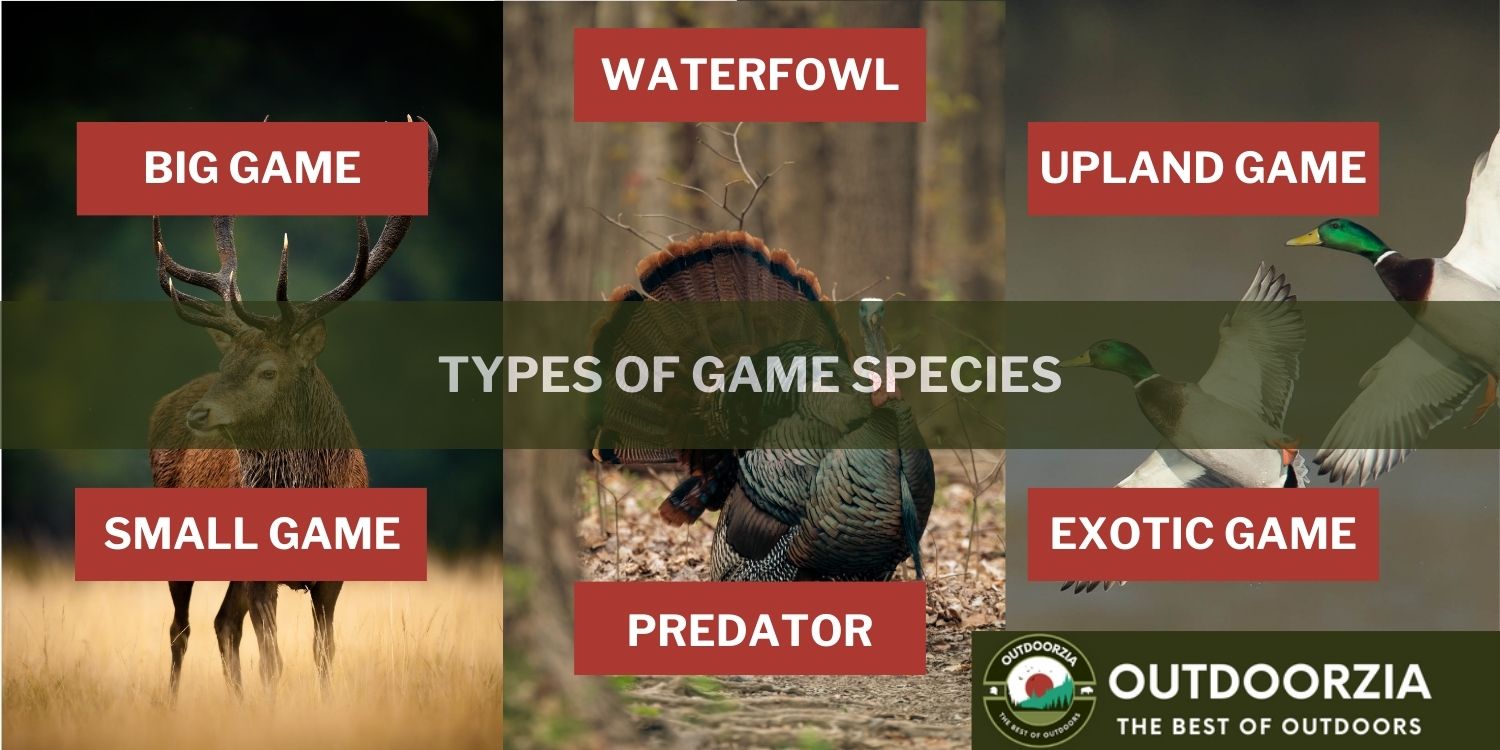
Game species are diverse groups of animals legally hunted for sport, food, or wildlife management. Games species are categorized based on size, habitat, and behavior. These categories are; big game, small game, upland game birds, waterfowl, predators, and exotic game. Each category of game species requires specific hunting techniques and gear. The categorization of the different types of game species assists in sustainable wildlife management and the alignment of hunting practices with conservation objectives.
Big game species are large animals hunted for sport, including deer, elk, moose, bear, and wild boar. Big game hunting is motivated due to to the challenging nature, pursuit of trophies and the valuable meat, big game species provide. Deer hunting, in particular, is immensely popular for both its accessibility and the skill it demands. Deer hunting often serves as a gateway for many into the broader world of big game hunting. Big game hunting allows for unique hunting experiences across varied terrains like dense forests, open plains, and rugged mountains. Successful big game hunting requires advanced skills, patience, and specialist equipment.
Some hunters pursue big game species not just for the thrill and the sport but also for trophies like antlers, skulls, and pelts. These hunting trophies are cherished for their beauty and as symbols of hunting prowess. Big game hunting also plays a crucial role in wildlife management and conservation efforts, helping to maintain balanced ecosystems by controlling population sizes.
Small game species are smaller, legally hunted animals such as rabbits, squirrels, and hares. Small game animals, include rabbits, squirrels and hares. Small game hunting offer a wide range of experiences which are both accessible and challenging. Small game species are highly valued not only for the sport and skill they require but also for their contribution to traditional cuisines. Found across diverse habitats, from dense woodlands to open fields and grasslands, small game animals necessitate a variety of hunting techniques, from still hunting to the use of trained dogs for flushing and retrieving.
Small game hunting often entails the use of shotguns or small-caliber rifles. Targeting small game species is an excellent gateway to the wider world of hunting. Hunting small games provides the opportunity to teach beginners good hunting practices. Small game hunting is deeply woven into cultural and family traditions. Hunting small game species is a practice which encourages conservation through regulated seasons and bag limits. These regulations ensure healthy populations of these small animals and allows them to continue thriving in their natural environments.
Upland game species are birds like pheasants, quail, and grouse which inhabit non-wetland areas and are pursued for sport and food. Upland game birds are normally hunted with the assistance of hunting dogs. Upland game species are birds which inhabit terrestrial environments, such as forests, grasslands, and agricultural fields, rather than wetlands or open water. Upland game includes a variety of species such as pheasants, quail, grouse, and woodcock, which are known for their ability to thrive in upland habitats.
Upland game hunting requires stealth, patience, and precise shooting skills, especially as these birds are often fast-flying and can abruptly change directions. Upland hunting is celebrated for its tradition and challenge, offering hunters the opportunity to enjoy the beauty of natural landscapes while practicing wildlife management and conservation. Upland hunting is deeply rooted in many cultures, reflecting a longstanding relationship between humans and these game species. Pursuing upland game continues to be a popular form of recreational hunting which supports the principles of sustainable hunting practices.
Waterfowl game species are birds such as ducks and geese which are typically hunted in and around water bodies. Waterfowl game animals are primarily hunted in wetlands, rivers, lakes, and coastal areas. Hunters of waterfowl often use boats, blinds, and decoys to enhance their chances of a successful hunt. The tradition of waterfowl hunting is deeply rooted in many cultures, with specific techniques developed to mimic calls and attract birds within range.
Waterfowl hunting requires knowledge of bird migration patterns, understanding of habitat preferences, and skill in waterfowl identification to ensure legal hunting practices. Waterfowl hunting contributes to wildlife management efforts by helping to control populations within sustainable levels. Waterfowl hunters often participate in conservation programs to preserve wetland habitats. The pursuit of waterfowl is celebrated for its challenges, the beauty of the natural settings, and the camaraderie among hunters, making it a cherished tradition in the hunting community.
Predator game species are animals hunted for their role as carnivores within an ecosystem. Predator game species, include coyotes, wolves, foxes, and big cats. Predator hunting takes place for reasons such as; population control, livestock protection, and as part of wildlife management strategies. The pursuit of these predator animals demands a comprehensive understanding of their behaviors and environments, presenting unique challenges due to their elusive nature. Predator hunting plays a crucial role in preserving ecosystem balance by preventing predator overpopulation and its potential negative impacts on other wildlife.
Hunting techniques for predators, such as coyotes, wolves, foxes, and big cats, involve using calls and decoys to mimic prey or distress sounds, strategic positioning to anticipate predator paths, and specialized gear including high-caliber firearms and night vision scopes. Through responsible and regulated practices, predator hunting serves as an essential tool in wildlife conservation, ensuring the sustainability of both predator and prey populations within their natural habitats.
Exotic game species are non-native animals introduced to new environments for hunting, offering unique hunting experiences but requiring careful management to avoid ecological disruption. Popular exotic game species in the United States include; the Axis deer, Blackbuck Antelope, and Aoudad (Barbary sheep). The game species are non-native animals which have been introduced into new habitats, sometimes becoming established populations outside their original range. Exotic game species offer hunters the opportunity to pursue unique animals not found in their native country, adding diversity to the hunting experience.
Exotic hunting often takes place on private ranches or in controlled hunting reserves, where these species have been introduced and managed for hunting purposes. Exotic hunting requires hunters to adapt to the specific behaviors and habitats of these non-native animals, often necessitating different strategies and techniques. While providing an interesting and often challenging hunting opportunity, it's essential for management practices to consider the ecological impact of these species on local ecosystems. Responsible hunting and management help prevent exotic game species from becoming invasive threats, ensuring their presence contributes positively to habitat conservation and biodiversity.
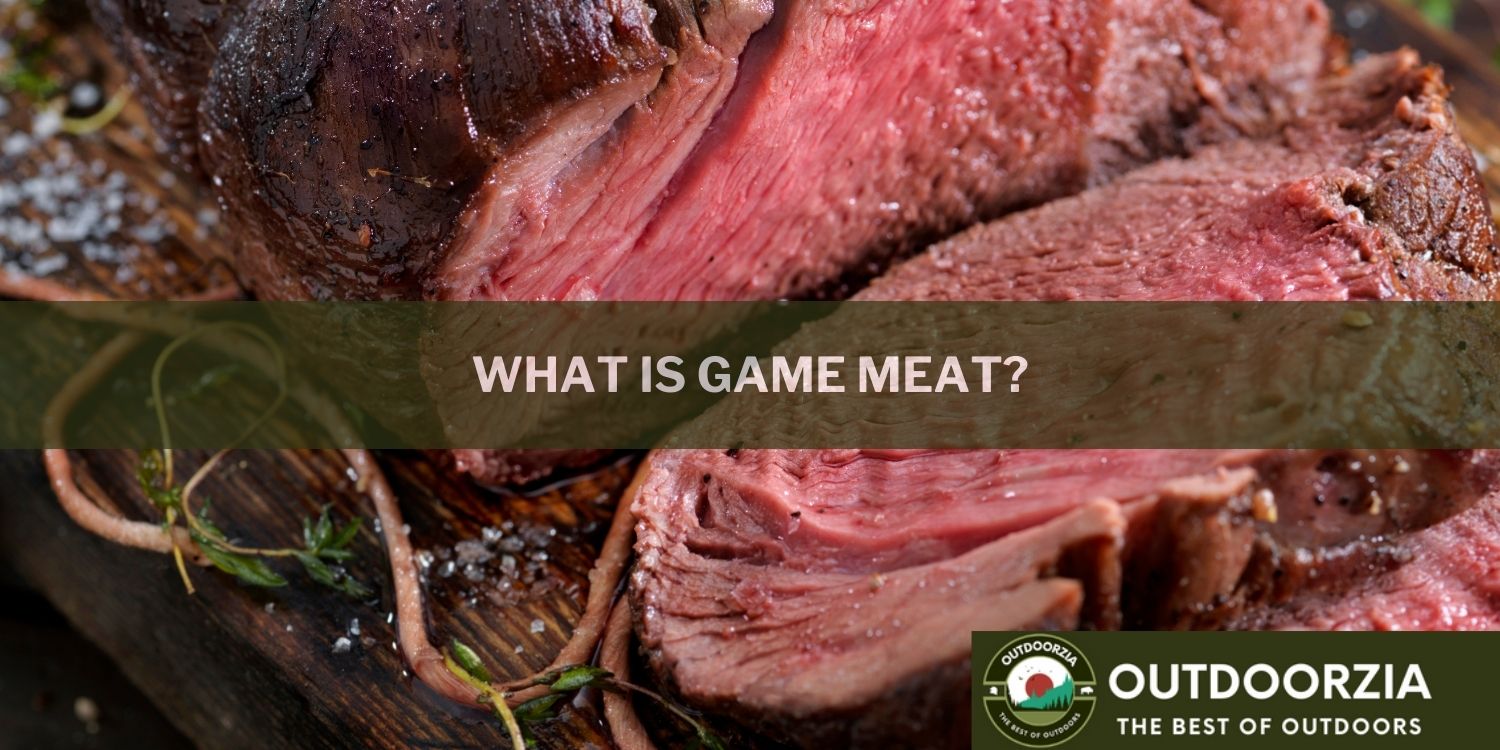
Game meat refers to the flesh of animals hunted for food in the wild, distinct from those raised on farms for consumption. Game meat encompasses a wide range of species, from large mammals like deer, elk, and wild boar, to smaller animals such as rabbits and squirrels, as well as birds like pheasants, ducks, and turkeys. Game meat is valued for its leaner composition, higher levels of omega-3 fatty acids, and richer, more distinctive flavor in comparison to domesticated meat.
The diet of wild animals, consists of natural forage which contributes to the nuanced taste profiles of game meat. This makes game meat a sought-after ingredient in culinary traditions worldwide. Some people consider game meat to be a more sustainable and ethical option. The reason some people believe game meat to be more sustainable and ethical is due to the animals being harvested in their natural environments, which can potentially reduce the impact on ecosystems. However, responsible hunting practices and regulations is still vital to ensure sustainability and conservation of wildlife populations. The popularity of different types of game meat varies regionally. With the popularity of a specific game meat being influenced by local hunting culture, game species in the region, and culinary preferences.
The most popular game meat varies by region and hunting traditions, but deer meat, also known as venison, consistently ranks as a favorite among hunters and culinary enthusiasts worldwide. Venison is renowned for its rich flavor, low fat content, and high protein, making it a sought-after alternative to beef and other domestic meats. In North America, white-tailed deer are a common source of venison, while in Europe, species like red deer and roe deer are more frequently hunted for their meat. Other popular game meats include wild boar, pheasant, and elk, each prized for its unique taste and nutritional benefits. The popularity of a specific game meat often depends on local hunting customs, availability of the species, and cultural dietary preferences.
In North America, venison, harvested from white-tailed deer and mule deer, stands out as a the most popular type of game meat. Venison is a game meat celebrated for its lean composition and rich flavor profile. Game birds are also popular in North America. Game birds include the wild turkey and waterfowl species such as ducks and geese. Game meats are not only popular in North America due to their distinct flavors, they are also valued for their nutritional benefits. The popularity of these game meats in North America is supported by a strong culture of hunting and conservation.
In South America the most popular game meat is javelina. Javelina is highly sought after for its rich, gamey flavor, which makes it a staple in many South American traditional cuisines. Alongside javelina, the capybara, the world's largest rodent, is considered a delicacy in some parts of South America. Capybara is a game meat which is appreciated for its unique taste. Venison is another popular game meat in South America, with pampas and marsh deer being the most abundant deer in the region. All of these game meats are integral to the continent's diverse culinary landscape, reflecting a deep connection to the land and its natural resources. Hunting the game animals and eating their meat not only perpetuates cultural traditions but also contributes to the management of their populations within South America's ecosystems.
In Europe, the most popular game meats are venison, wild boar, and pheasant. Across Europe, game meat preferences vary significantly by region. In the United Kingdom, venison from red and roe deer species is highly prized. Game birds such as pheasant and grouse are also popular game meats in the UK. In Central Europe, particularly Germany and Poland, wild boar and rabbit are popular game meats, often used in stews and roasts. The Southern European countries of Italy and Spain, has a strong tradition of hunting and consuming smaller game animals such as hare and partridge. Meanwhile, in the Nordic countries elk and reindeer game meat is very popular. There are strong hunting traditions throughout Europe with game meat preferences shaped by the animals present in each region.
In Asia, the tradition of consuming game meat spans across the continent, with venison and wild boar the most popular in many regions.These game meats, known for their distinctive flavors and nutritional value, are often featured in a wide array of traditional dishes. Beyond venison and wild boar, Asia's diverse palate values various species, this includes game birds such as quail and pheasant. These game birds are incorporated into several gourmet recipes. The appreciation for game meat in Asia shows the regions respect for nature and the importance of hunting across the continent.
In Africa, the most popular game meats include; impala, kudu, springbok, and warthog. The game meats serve as staples in many African diets. Also popular are game birds such as guinea fowl. Guinea fowl meat is highly regarded for its taste and texture. Ostrich meat, known for being lean and high in protein, is another popular game meat. Hunting and consuming game meat is a fundamental part of many cultures across Africa. The range of game meats available is a reflection of the continent's vast wildernesses and wide variety of game animals.
In Oceania, the game meats venison and kangaroo are the most popular. In Australia, kangaroo is the game meat which stands out due to its distinctive taste and nutritional profile. Wallaby meat is also popular, particularly in Tasmania, where it's prized for its flavor and tender meat. Both Australia and New Zealand also value the culinary versatility of wild boar, with its meat integrated into a variety of dishes. New Zealand is renowned for its deer hunting. As a result the most popular game meat in New Zealand is venison. The source of this venison is most often from red or fallow deer. Both of these deer species are prized for their flavorful and nutritious meat. The culinary traditions of Oceania, embrace the rich flavors of the game species available across the continent. Oceania shows a commitment to sustainable hunting practices whilst celebrating the game meats available in the region.

Game meat is generally safe to eat when correctly handled and prepared. Game meat is a source of high-quality protein, rich in essential nutrients and lower in fat in comparison to other domesticated meats. However, the safety of consuming game meat depends on; the health of the animal, how it was harvested, processed, and cooked. Wild animals can carry diseases which can be transmitted to humans, so it's crucial to ensure the game is properly inspected, especially in areas known for certain wildlife diseases.
For the safe consumption of game meat the following steps are essential:
To ensure game meat is a safe, nutritious, and enjoyable part of your diet, it's crucial to adhere to best practices in handling, inspection, and preparation. By taking steps such as inspecting for diseases, careful field dressing, avoiding contamination, and thoroughly cooking the meat, you can mitigate health risks and enjoy the benefits of eating game meating. With the correct attention to these details, game meat provides a sustainable, flavorful source of protein, allowing you to enjoy the bounty of the wild with confidence.
Proper preparation of wild game meat involves prompt field dressing, cooling, and cleaning. This is often followed followed by aging to enhance the tenderness and flavor of the meat before cooking. Preparing wild game meat properly is essential for both safety and quality.
Field dressing should be done as fast as possible to prevent bacteria growth. Field dressing is the process of removing the internal organs from a hunted animal, typically done to preserve the meat and facilitate transportation. While for game animals like deer, it involves gutting and skinning, for game birds such as ducks, it entails removing the entrails while leaving the feathers intact.
After field dressing it's important to cool the meat quickly to further inhibit bacteria growth. Any excess fat, connective tissue, and damaged areas should be removed from the game meat to prevent off-flavors, as these parts can harbor bacteria or spoil faster. Next, the game meat should be thoroughly washed under cold running water. Now the game meat must be pat dried. Pat drying means gently dabbing the surface of the meat with a clean towel or paper towels to remove excess moisture. Pat drying is done after washing the meat and before cooking or storing it. The process of pat drying helps ensure it cooks evenly and prevents the growth of bacteria.
Aging game meat is a common practice to enhance flavor and tenderness by allowing natural enzymes to break down the muscle fibers. However, aging is not always necessary, and it depends on factors such as the age of the animal, the desired flavor profile, and personal preference. Some hunters may choose to age their game meat, while others may opt to consume it fresh. Each step of wild game meat prepration is important, ensuring the meat is delicious, tender, and safe to eat.
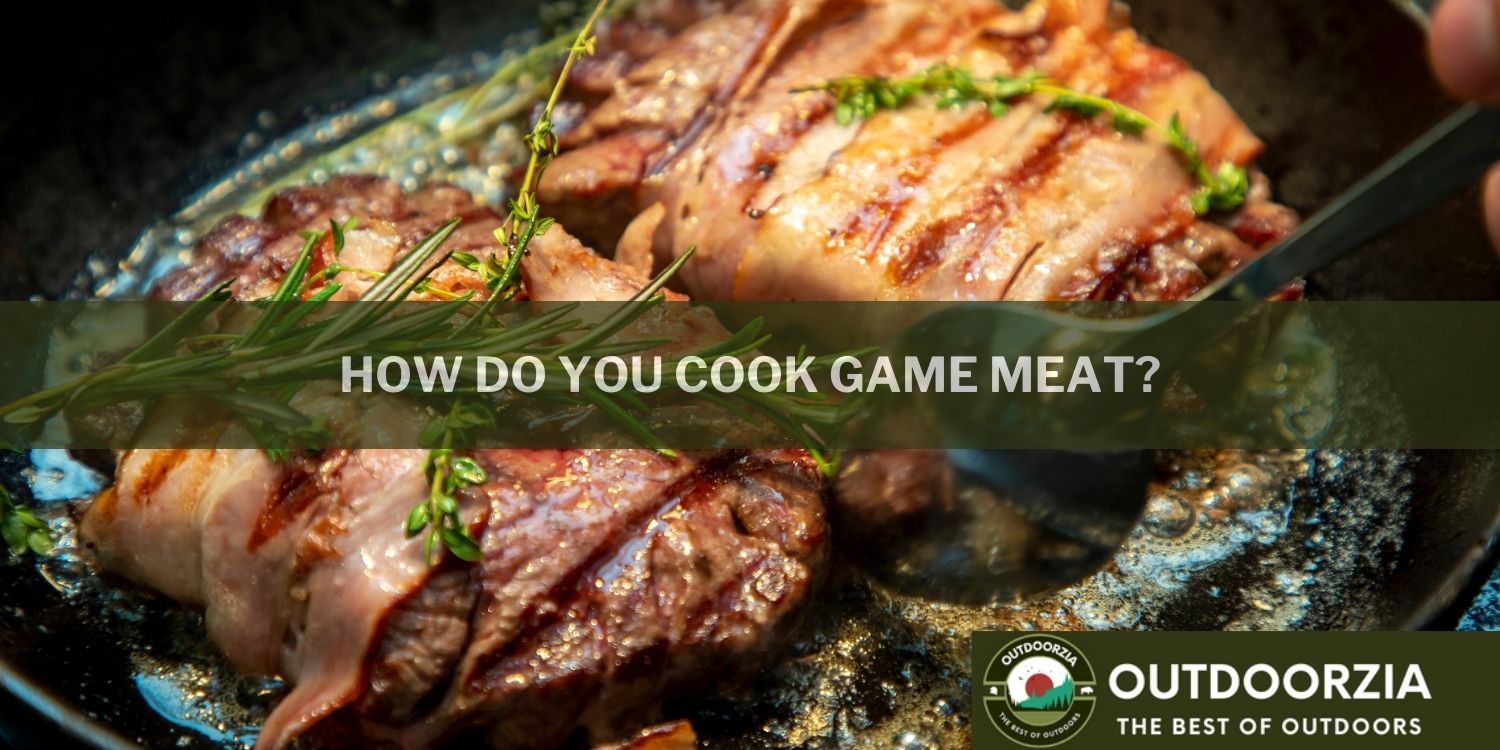
You can cook game meat by grilling, roasting, or braising. Cooking game meat requires careful consideration to ensure optimal flavor and tenderness. Begin by selecting a cooking method suitable for the type of game meat you have. For lean cuts like venison, consider marinating the meat beforehand to add moisture and flavor. When cooking, avoid overcooking to prevent toughness; medium-rare to medium doneness is best for most game meats. The natural flavors of game meat can be enhanced by incorporating aromatic herbs, spices, and complementary sauces. Finally, game meat should be allowed to rest before serving to redistribute juices and ensure tenderness. Whether grilling, roasting, or braising, these details can help you achieve delicious results with game meat.
Venison is often regarded as the best-tasting game meats due to its lean yet rich flavor profile with subtle sweetness. Venison is typically game meat from deer but also from other large game animals such as elk, moose, or caribou. Other game meats which are considered to be amongst the best tasting include; wild boar, pheasant, and duck. All of these game meats offer a variety of flavors which cater to different palates and cooking styles. Ultimately, the best-tasting game meat is subjective and dependent upon individual preferences and culinary preparations.
bear or raccoon is often considered to be the worst tasting game meat.The reason these game meats are often perceived to be less desirable is due to their strong, gamey flavor and potential for toughness. However, the perception of the worst-tasting game meat can vary greatly depending on individual preferences and cooking methods. Regardless of game species, meat from older or poorly handled animals may also result in a less pleasant taste experience. Ultimately, what is considered the worst-tasting game meat is subjective and can vary widely among different individuals.

Alaska, Texas, Montana, Wyoming, and Colorado stand out as the states in America which have the most wild game. These states offer their vast landscapes teeming with diverse species such as moose, elk, deer, bear, and small game like grouse and rabbits. The large numbers of game species allow in these states of hunters a diverse range of hunting experiences, particularly on their extensive public lands.
Alaska's rugged wilderness, Texas's sprawling ranchlands, Montana's expansive forests, Wyoming's rugged mountains, and Colorado's diverse terrain offer prime habitats for a plethora of game species. With abundant public lands available for hunting, including national forests, wildlife management areas, and state parks, these states provide hunters with countless opportunities to pursue various game species. These game species can be hunted in breathtaking natural landscapes, making them top destinations for hunting enthusiasts from across the country.
The white-tailed deer is the most common game species in the United States. White-tailed deer are widely distributed across America encompassing nearly every state. These deer thrive in diverse habitats ranging from forests to grasslands. The adaptability and prolific numbers of white-tailed deer provide ample opportunities for deer hunting enthusiasts nationwide. Hunters pursue white tailed dee across various terrains and ecosystems. Whether in the dense forests of the Northeast, the expansive plains of the Midwest, or the rugged mountain ranges of the West, white-tailed deer hunting is a popular and accessible pursuit for most hunters.
The largest wild game species you can hunt in America is the Alaska-Yukon moose (Alces alces gigas), with males weighing up to 1,600 pounds and having antlers spanning over 6 feet. This majestic species provides a thrilling and challenging hunting experience for those seeking big game adventures.
Some of the most dangerous game species to hunt in America include grizzly bears, which are known for their size, strength, and aggression, as well as mountain lions (also known as cougars or pumas), known for their stealth and predatory behavior. Hunting these formidable animals requires caution, skill, and respect for their capabilities in order to ensure a safe and successful hunt.
Some of the most difficult types of game to hunt in America include elusive species such as mountain goats, bighorn sheep, and elusive predators like wolverines and bobcats. These animals inhabit rugged and remote terrains, possess keen senses, and are highly adaptive, making them challenging targets for hunters. Successfully pursuing and harvesting these elusive game species requires specialized knowledge, physical endurance, and strategic hunting tactics.
feral hogs, coyotes, and certain species of invasive deer such as axis deer and fallow deer are considered to be a nuisance in the USA. These animals can cause damage to crops, property, and native wildlife, leading to efforts to manage their populations through hunting and other control methods. Due to the probelms caused by feral hogs, hog hunting is available all year round in many states.
Some of the most prevalent game species globally include deer, elk, moose, wild boar, and waterfowl such as ducks and geese. These species are widely distributed across different continents and are commonly hunted for their meat and sport.
One of the largest wild game species that can be hunted globally is the African elephant (Loxodonta africana). With males reaching impressive sizes and weights, hunting elephants requires specific permits and is highly regulated. Other large game species that are sought after by hunters include bison, Cape buffalo, and grizzly bears.
Some of the most dangerous game species that can be hunted globally include African Cape buffalo, grizzly bears, and African lions. These animals possess strength, aggression, and defensive capabilities that make them challenging and potentially hazardous to hunt. It is important for hunters to exercise caution and adhere to strict safety protocols when pursuing these species.
The most difficult types of game to hunt globally can vary depending on factors such as the habitat, terrain, and specific hunting challenges of each region. However, some examples of challenging game species can include mountain goats, wild sheep, elusive predators like leopards or bears, and large and intelligent animals such as elephants or buffalo.
No, it is generally illegal to hunt snow leopards as they are protected under international conservation laws and considered an endangered species.
The most popular birds to hunt as game in America include turkey, duck, and upland game birds such as pheasant, quail, and grouse. These birds offer challenging hunting experiences and are sought after by both seasoned and novice hunters. Each species has its own dedicated hunting seasons and regulations, and they attract hunters from across the country.
In upland hunting, birds such as pheasants, quail, grouse, and woodcock are commonly hunted. These birds inhabit open fields, forests, and brushy areas, and hunting them often involves walking or flushing them out with the help of hunting dogs.
No, doves are not typically classified as upland game birds. They are more commonly categorized as migratory birds and are subject to specific hunting regulations and seasons. However, in some states, doves are classified as upland game birds and can be hunted as part of upland bird hunting seasons.
Waterfowl hunting typically involves the pursuit of ducks and geese, which are migratory birds that inhabit wetland areas. These species include mallards, pintails, teal, geese, and various other duck and goose species.
Big game animals which possess exceptional characteristics, such as size, rarity, or unique features are generally considered to the the most prestigious game you can hunt in America. Big game hunting includes species such as elk, bighorn sheep, grizzly bear, mountain lion, and various deer.
Some of the most prestigious game animals to hunt globally include species like African elephant, Cape buffalo, leopard, lion, and rhinoceros. These species are highly sought after by hunters for their size, danger, and the exotic nature of the hunts. However, it's important to note that hunting regulations and conservation efforts vary by country and region, and hunting these species may be restricted or prohibited in certain areas.
The Big Five game animals typically refer to the the following big game animals found in Africa; African elephant, Cape buffalo, leopard, lion, and rhinoceros.